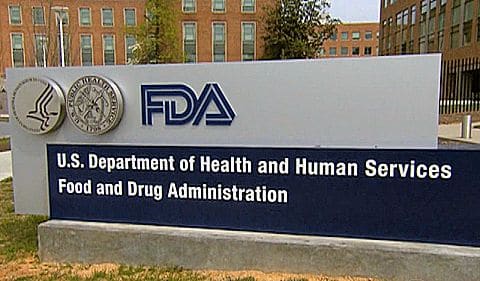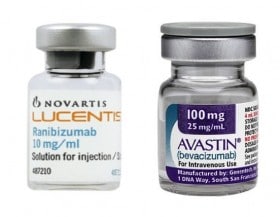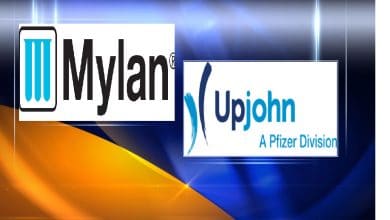
As per tradition, the Food and Drug Administration has summarized the regulatory activity of the Agency, dedicating a particular focus to the approvals of new drugs carried out during the year that has just ended. In 2015, the FDA's Center for Drug Evaluation and Research (CDER) approved 45 innovative medicines, i.e. new molecular entities (NMEs) registered as New Drug Applications (NDAs) or as new biological therapies (Biologics License Applications – BLAs).
 Each year, the FDA CDER approves hundreds of new drugs, many of which are variants of existing products, such as new dosage forms of already approved products or the introduction of equivalent drugs on the market following the expiration of patent coverage . The 45 new drugs referred to by the FDA fall into a narrower subset than that of the new authorizations, as they are drugs that offer an answer to previously unmet medical needs or that contribute to significantly advancing the supply therapeutics for patients and general public health.
Each year, the FDA CDER approves hundreds of new drugs, many of which are variants of existing products, such as new dosage forms of already approved products or the introduction of equivalent drugs on the market following the expiration of patent coverage . The 45 new drugs referred to by the FDA fall into a narrower subset than that of the new authorizations, as they are drugs that offer an answer to previously unmet medical needs or that contribute to significantly advancing the supply therapeutics for patients and general public health.
Between 2006 and 2014, the FDA's CDER recorded an average of 28 approvals of innovative drugs per year and, according to what was communicated by the FDA, applications for new registrations remain constant over time. Many of the 45 drugs approved in 2015 are characterized by a high potential in terms of impact on the quality of therapies. 16 of the 45 innovative products authorized in 2015 (i.e. the 36%) were approved as "first-in-class", a further indicator of the innovative character of a drug. These medicines often have different mechanisms of action than existing therapies on the market. The high first-in-class approval rate indicates that the pool of innovators authorized in 2015 consists of many drugs of this type.
Notable drugs in this group, according to the FDA, include: Bridion, for the reversal of neuromuscular blockade induced by some types of anesthesia; Ibrance, for the treatment of metastatic breast cancer and Praxbind, to reverse the negative anticoagulant effects caused by dabigatran.
In addition, approximately 47% of the innovative medicines approved in 2015 (21 out of 45) were approved for the treatment of rare diseases. This is significant because patients with rare diseases often have few (in some cases none) treatment options available. Among the examples of therapies for rare diseases approved in 2015, the FDA mentions: Kanuma, aimed at the treatment of lysosomal acid lipase deficiency, a rare hereditary genetic disease that does not allow the body to produce an enzyme responsible for the metabolization of fats and can lead to life-threatening liver disease, cardiovascular disease, and organ damage; Orkambi, a medicine for cystic fibrosis; Strensiq, a long-term enzyme replacement therapy in patients with infantile-onset and juvenile-onset hypophosphatasia; Unituxin, indicated for the treatment of pediatric patients at high risk of neuroblastoma and Xuriden, for the treatment of patients with hereditary orotic aciduria, a condition that can cause blood abnormalities (anaemia, decreased white blood cell count, decreased neutrophil count) , urinary tract obstruction, growth retardation and developmental delay.
 Among the additional drugs reported by the FDA are also the antibacterial Avycaz, to treat complicated intra-abdominal infections and complicated urinary tract infections, and the antifungal product Cresemba, indicated in invasive aspergillosis and invasive mucormycosis. Additionally, the CDER also highlights the cardiovascular drugs Entresto, to treat heart failure, and Corlanor, to reduce hospitalizations caused by worsening heart failure. Among the drugs for high cholesterol, the FDA office emphasizes Praluent, for the treatment of patients with difficult-to-treat heterozygous familial hypercholesterolemia, and Repatha, for the treatment of this same condition as well as homozygous familial hypercholesterolemia ( a rare disease).
Among the additional drugs reported by the FDA are also the antibacterial Avycaz, to treat complicated intra-abdominal infections and complicated urinary tract infections, and the antifungal product Cresemba, indicated in invasive aspergillosis and invasive mucormycosis. Additionally, the CDER also highlights the cardiovascular drugs Entresto, to treat heart failure, and Corlanor, to reduce hospitalizations caused by worsening heart failure. Among the drugs for high cholesterol, the FDA office emphasizes Praluent, for the treatment of patients with difficult-to-treat heterozygous familial hypercholesterolemia, and Repatha, for the treatment of this same condition as well as homozygous familial hypercholesterolemia ( a rare disease).
In the field of oncology, 2015 saw the registration of: Darzalex, Empliciti, Farydak, and Ninlaro, for the treatment of patients with multiple myeloma; Alecensa and Tagrisso, for the treatment of patients with non-small cell lung cancer; Cotellic, for the treatment of some patients with metastatic melanoma; Lonsurf, for the treatment of patients with metastatic colorectal cancer, and Yondelis, for the treatment of soft tissue cancer. Notable approvals of the year also include Viberzi, for the treatment of patients with irritable bowel syndrome with diarrhea (IBS-D), Veltassa, for the treatment of hyperkalemia, and Daklinza, for the treatment of chronic hepatitis C from genotype 3 virus.
27 out of 45 innovative drugs (60%) were entered into one of the programs designed by the FDA to expedite the registration process: Fast Track, Breakthrough, Priority Review, and/or Accelerated Approval. Each of these designations helps increase the speed of medicines development and authorization and is designed to help bring critically important medicines to market as quickly as possible.
Consult the CDER report on the FDA website
Nine new drugs in the EU in December, 93 in all of 2015
 During its December meeting, the Committee for Medicinal Products for Human Use (CHMP) of the European Medicines Agency (EMA) recommended the marketing authorization for 9 new medicines, for a total of 93 new authorizations in the course of 2015. The EMA Committee recommended in particular the granting of a conditional marketing authorization for Tagrisso (osimertinib) for the treatment of non-small cell lung cancer, as well as Portrazza (necitumumab), a recombinant human monoclonal antibody against Egfr.
During its December meeting, the Committee for Medicinal Products for Human Use (CHMP) of the European Medicines Agency (EMA) recommended the marketing authorization for 9 new medicines, for a total of 93 new authorizations in the course of 2015. The EMA Committee recommended in particular the granting of a conditional marketing authorization for Tagrisso (osimertinib) for the treatment of non-small cell lung cancer, as well as Portrazza (necitumumab), a recombinant human monoclonal antibody against Egfr.
Neofordex (dexamethasone), which has been granted orphan drug designation, has received a positive opinion for the treatment of symptomatic multiple myeloma and has been submitted under a hybrid procedure, a type of application which is based in part on the results of studies performed with a reference product and partly based on new evidence. The CHMP also recommended the granting of a marketing authorization for Feraccru (ferric maltol) for the treatment of iron deficiency anemia in patients with inflammatory bowel disease; Zurampic (lesinurad), a selective uric acid reuptake inhibitor that blocks the uric acid transporter Urat1, has received a positive opinion for the treatment of hyperuricemia, an excess of uric acid in the blood.
The EMA Committee then recommended the granting of a marketing authorization for Vaxelis, a vaccine against diphtheria, tetanus, pertussis, hepatitis B, poliomyelitis and invasive diseases caused by Haemophilus influenzae type B. Iblias and Kovaltry ( octocog alfa – recombinant coagulation factor VIII) received positive opinions for the treatment and prophylaxis of bleeding in patients with haemophilia A. A generic drug also received a positive opinion from the Committee: Caspofungin Accord (caspofungin) for the treatment of fungal infections. Instead, the CHMP adopted a negative opinion for Dropcys (mercaptamine hydrochloride) for the prevention and treatment of cystinosis affecting the eye. The Committee also recommended 6 extensions of therapeutic indications: for Brilique, Nplate, Revolade, Tarceva and two for Cyramza.
Related news: AIFA, L'updated list of innovative medicines as of 23/12/2015
The 47% of the drugs approved by the FDA in 2015 are “orphans”





